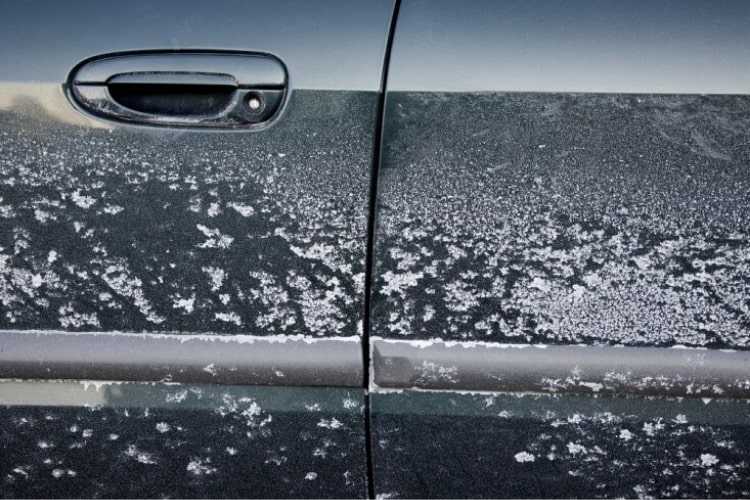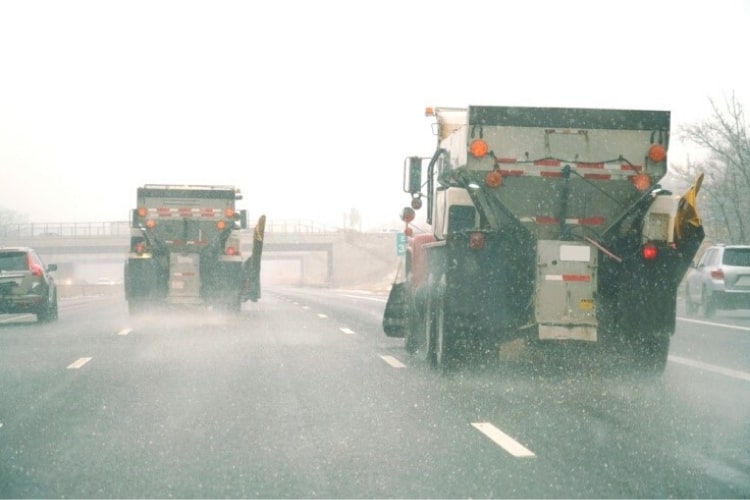Road Salt: Much More Than Sodium Chloride
SmithsonianOpens a new window magazine estimates the annual use of road salt at 137 poundsOpens a new window per person.

Every winter, salt exploits any breach in your car’s paint. Scrapes, scratches and gouges allow salt’s corrosive power to go to work. The environment feels ill-effects as well. Road salt gets into groundwater, and it harms plants. The Smithsonian article says about 40 percent of the nation’s urban waterways have chloride levels that are unsafe for aquatic life. Road salt is the main culprit.
Road Salt Alternatives
Crews have been spreading salt, or sodium chloride, on the nation’s roads for decades. It’s just a coarser version of simple table salt. Today, more novel deicers address the need for more eco-friendly alternatives. Some are byproducts of food production processes. Beet juice, cheese brine, pickle juice and potato juice are examples. UreaOpens a new window, a liquid fertilizer, is also spread on some roadways.
Road crews deal with slippery roads in three ways:
- Pre-treat roads to minimize bonding of ice/snow to asphalt and concrete
- Melt accumulating ice and snow with deicers
- Improve traction with sand or other non-slip substances
Road salt has long been a cheap and effective deicer. Diamond Crystal SaltOpens a new window says that at 30 degrees F, one pound of salt melts up 46 pounds of ice. As temperatures drop, salt’s melting power degrades. At 10 degrees F, it is ineffective. By comparison, pickle brine works down to -6 degrees F. Beet juice, cheese brine, magnesium chloride and calcium chloride melt ice down to -20 degrees F.
Pre-treat roads
Roads are increasingly pre-treated with “beet juice,” a byproduct of sugar beet processing. The sugars in the wastewater make it effective at very low temperatures. However, an article in the Washington PostOpens a new window describes it as “sticky, oil-like.” It stays on the road, but it can also stick to your vehicle.
National GeographicOpens a new window discusses the advantages of potassium acetate. Crews apply it to roads in advance, preventing ice from bonding to the roadway. The biodegradable, noncorrosive chemical contains no chlorides. It is effective down to -75 degrees F.
Improve traction
Many municipalities now use more sand and less salt. Sand does improve traction on icy surfaces. However, those jagged grains act as abrasives when they come in contact with your car. At higher speeds, it’s a little like sandblasting your vehicle’s paint.

Someday, both cars and the environment may get a break. There are proposals for “intelligent highwaysOpens a new window” that rid themselves of snow and ice.
303 Products in the Winter
Until those smart highways arrive, it’s important to prepare your car’s finish for a tough winter ahead. Thoroughly clean and protect the finish. Start with 303 Ultra-Concentrated Car WashOpens a new window. After cleaning, follow up with an application of 303 Touchless SealantOpens a new window. Use it on paint, trim and wheels. The advanced formulation bonds to your car’s exterior surfaces to keep the corrosive forces of road salt at bay.
The undercarriage of your vehicle is particularly vulnerable in the winter. Fortunately, it’s possible to neutralize the salt coating your brake lines and suspension parts. Use a cleaning solution containing a neutralizer like baking soda, granular gypsum or dolomitic limeOpens a new window.





